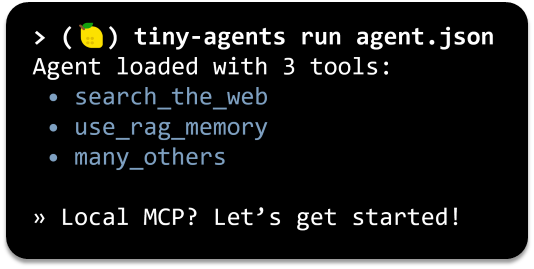Reprogramming Discovery: How AMD Instinct™ GPUs Are Powering the Next Wave of AI-Driven Biology - Part 3
Jun 03, 2025

Contributed by IPA Therapeutics
Part 3: RFdiffusion – Advancing De Novo Protein Design
Welcome to the third and final part of our benchmarking series comparing AMD Instinct MI300X and NVIDIA H100 GPUs in real-world bioinformatics workloads.
We began with NLP for knowledge retrieval, moved through protein embeddings for function prediction, and now arrive at the frontier of de novo protein design.
The benchmarks were conducted by ImmunoPrecise Antibodies (IPA) and its AI subsidiary BioStrand, the creators of LENSai™ — an integrated platform for AI-powered biologics discovery.
At the core of LENSai lies HYFT™ technology — a biological fingerprinting system that encodes conserved sequence, structure, and function into a unified index. HYFTs were built to solve a fundamental limitation in AI: its lack of native understanding of biological systems. By embedding biological logic into the fabric of computation, HYFTs give AI models the context to reason through biology, not just compute it.
RFdiffusion represents a leap in protein engineering: from interpreting nature to designing it. In this post, we benchmark RFdiffusion’s performance and memory demands while exploring the technical adaptations required to run it on AMD hardware, including modifications to graph libraries and SE(3)-equivariant transformers.
De novo protein design is one of modern biology's most computationally intense and scientifically ambitious areas. Traditional methods have relied on manual domain knowledge or random library screening, with limited success in generating truly novel proteins that are stable, functional, and therapeutically relevant.
RFdiffusion is a generative AI model inspired by advances in image and language modeling that uses a diffusion-based approach to sculpt protein backbones from noise. RFdiffusion brings creativity to protein design—it doesn’t just optimize existing scaffolds, it imagines new ones.
This new paradigm allows researchers to specify binding pockets, symmetrical geometries, or immunological targets. RFdiffusion expands what’s possible in synthetic biology, from vaccine design and antibody development to next-generation enzymes.
Technical Deep Dive into RFdiffusion
RFdiffusion employs a diffusion-based approach, progressively refining protein structures from initial random noise to well-defined folds. Like image generation diffusion models, it iteratively denoises initial random structures into plausible protein structures. The model’s unique value lies in its conditioning capabilities, allowing users to specify target symmetry, binding characteristics, or particular structural motifs.
Importantly, RFdiffusion generates only the protein backbone. Tools such as ProteinMPNN subsequently design amino acid sequences consistent with these backbones. Thousands of generated sequences are filtered on BioStrand’s LENSai platform for immunogenicity, stability, and solubility, forming a comprehensive computational pipeline integral to modern drug discovery.
Diverse Applications of RFdiffusion
RFdiffusion's versatility supports numerous critical protein design applications:
- Novel Protein Folds: Generates stable proteins (300-600 amino acids) without any templates.
- Protein Binders: Creates proteins targeting specific binding sites effectively.
- Enzyme Active Site Scaffolding: Designs enzymes by arranging catalytic amino acids accurately.
- Symmetric Assemblies: Generates symmetric protein assemblies useful in vaccines and nanotechnology.
- Antibody Design: Designs antibodies entirely in silico, refining antibody-antigen interactions through iterative modeling.
RFdiffusion Benchmark Results
RFdiffusion benchmarks underscored AMD's substantial computational efficiency:
Task |
NVIDIA H100 (Time/Cost) |
AMD MI300X (Time/Cost) |
Training (10 epochs) |
73h 20m / $1754 |
77h 30m / $1358 |
Inference |
Slightly Faster |
Slightly Slower, significantly cheaper |
AMD provided prompt technical solutions for hardware-specific issues, maintaining reliable model performance.
Overcoming Technical Challenges
To enable RFdiffusion on the AMD Instinct MI300X, we collaborated with Brium, a specialized engineering firm, to port key components — including CUDA-dependent libraries like DGL and SE(3)-Transformers — to AMD ROCm™ software. Together with Brium, we will release a technical deep dive and open-source the AMD-compatible RFdiffusion fork, aiming to broaden access to protein design tools across the scientific community.
Adapting RFdiffusion for AMD GPUs required modifications to core libraries such as SE(3)-Transformers and Deep Graph Library (DGL), due to their inherent compatibility with NVIDIA's CUDA ecosystem. RFdiffusion leverages SE(3)-equivariance for consistent predictions irrespective of spatial orientation and utilizes graph representations of proteins through DGL for effective structure prediction. Extensive modifications to these libraries have been implemented, and an AMD-compatible RFdiffusion fork will soon be open-sourced.
Strategic Advantage: Comprehensive Cost Reductions
AMD Instinct MI300X GPUs provided notable cost reductions across diverse workflows:
Workload |
Cost Reduction (AMD vs NVIDIA) |
RFdiffusion |
~23% |
Protein Language Models |
~44% - 63% |
NLP Embeddings |
~39% |
Structure Prediction |
~43% |
Technical Implementation: Transitioning to AMD Instinct GPUs
Transitioning to AMD Instinct GPUs involves minimal adjustments:
FROM rocm/pytorch:rocm6.3.1_ubuntu22.04_py3.10_pytorch
PyTorch abstraction enables seamless GPU integration.
Looking Ahead: Future-Proofing IPA's Platform
As IPA advances therapeutic pipelines, including GLP-1 agonists, AMD Instinct MI300X GPU’s scalability and efficiency position is integral to future computational biology innovations.
"The AMD Instinct MI300X has allowed us to scale large AI models and pipelines that previously hit memory or cost ceilings. It’s more than a spec sheet—it’s a cornerstone for what comes next in computational biology." — Frédéric Chabot, Head of Corporate Development, IPA
These benchmarks were run across LENSai™, our proprietary platform for AI-driven drug discovery, which integrates HYFT® technology to connect sequence, structure, and function into a unified reasoning framework. Whether identifying promising targets or designing novel therapeutic proteins, LENSai enables researchers to accelerate discovery cycles with deep biological context and multi-modal precision — and AMD’s hardware helps it scale.
As the demands of drug discovery evolve, so must the compute. The continually growing AMD ecosystem, robust software stack, and high-memory architecture make it a natural partner for scalable, AI-native platforms like LENSai.
IPA Therapeutics (ImmunoPrecise Antibodies NASDAQ: IPA) is a biotherapeutic research company that brings industry leading antibody discovery services and complex artificial intelligence technologies together — to lead its pharmaceutical partners into the era of the antibody.
Vultr is led by veterans of the managed hosting business, taking 20+ years of experience in complex hosting environments and made it their mission to simplify the cloud.









